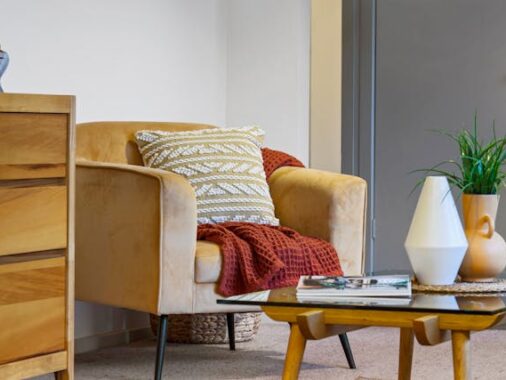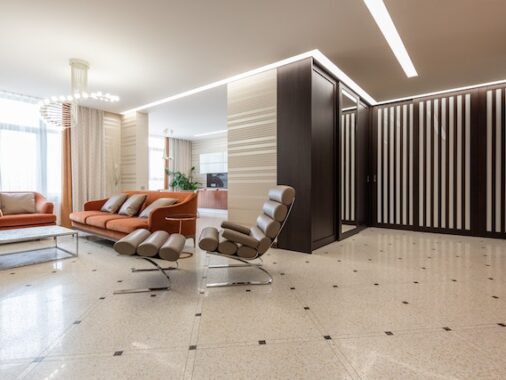Imagine a world where homes not only provide comfort and security but also tread lightly on our fragile environment. In a landscape dictated by the escalating effects of climate change and constrained resources, there’s a growing need for homes that align with the principles of sustainable living. Embracing the trend for eco-conscious architecture and deploying sustainable materials in house building has paved a viable way forward. This shift is not only vital for the health of our planet but also for creating thriving, energy-efficient living spaces.
The Emergence of Sustainable Home Construction
Today, our planet is at a crossroads due to the pressing crisis of climate change. The alarming rise in global temperatures necessitates a paradigm shift in all sectors, not least within the realm of architecture and construction. As we stand on the precipice of a climatic tipping point, the adoption of energy-efficient construction methods has morphed from a peripheral concern to an urgent necessity.
The concept of sustainable homes is hardly newborn. Historical evidence from ancient civilisations points to the utilisation of local resources to construct dwellings that were intricately tied to their environment. Modern sustainable architecture has evolved from these ancient practices, adjusting and innovating to suit the context of a changing climate and a greater understanding of environmental science. The key objectives of sustainable architecture indeed revolve around the reduction of environmental impact through efficient energy usage, water conservation, and ensuring a healthy indoor environment, all while maintaining architectural aesthetics and functionality.
Key Elements of Eco-Friendly Architecture
So, what sets eco-friendly architecture apart? The green design principles implemented seek to enhance the harmony between artificial habitats and the surrounding environment. This involves various measures such as the increased incorporation of solar power, optimising natural light dispersion, and advocating good ventilation within the dwellings for reduced dependency on artificial temperature regulation.
Furthermore, a cornerstone for green design is space efficiency. This facet of sustainable architecture discourages wasteful, oversized constructions that burrow into resources at an unsustainable rate. Instead, it favours smart, compact designs that maximise functionality while minimising environmental impact.
Another exciting component of eco-friendly architecture is the incorporation of the surrounding landscape and plant life. This practice, often termed ‘biophilic design’, creates a psychological connection between residents and the natural world around them, ultimately contributing to their well-being.
Popular Sustainable Materials in Eco-Revolutions
The eco-revolution in the world of architect-designed homes goes a step further into the selection of building materials. Traditional materials have made way for renewable resources such as bamboo, cork, and timber, known for their strength, aesthetic appeal, and low environmental impact due to their rapid regenerative capacities.
Further, industrial and consumer waste materials experience an afterlife through recycling and upcycling methodologies, therefore decreasing landfill volume and overall environmental pollution. What’s more, the industry is witnessing a dramatic shift toward the use of non-toxic materials to maintain healthier, chemical-free living environments.
Simultaneously, the industry is no stranger to innovation. New scientific breakthroughs have given birth to products such as green concrete and insulating materials incorporating aerogels – offering robust, energy-efficient alternatives to traditional options.
Architecturally Excellent Examples of Eco-Friendly Houses
Projects like Edge House in Poland and Germany’s Villa K effortlessly demonstrate that sustainability and style are far from mutually exclusive. These houses, featuring environmentally conscious designs, showcase the seamless integration of sustainable practices without compromising on aesthetic appeal. They’ve stood as tangible benefits of energy-conserving, eco-conscious architecture, offering improved living conditions and healthier indoor environments. Additionally, they highlight the contributions of the architects who fearlessly convey visions of green construction.
Future Perspectives in Eco-Friendly Architectural Designs
As we look towards the horizon, we see a world where environmental adaptability frames the design of future homes. This could mean dwellings that utilise bio-responsive façades that react to environmental changes or those that employ innovative technologies for optimising energy conservation. Augmented reality (AR) and 3D modeling will enable architects to accurately visualise and refine the design in a virtual space before groundbreaking. Artificial intelligence also holds the potential to predict and optimise energy usage within homes even before they materialise into standing structures.
Conclusion
As we tread into the future, the silent revolution in architecture and homebuilding using sustainable, eco-friendly materials carries the potential for significant change. With every architect-designed home that aligns with eco-conscious principles, we edge closer to a world where living harmoniously within our environmental means becomes the norm. It’s through these strides that architects and homeowners, together, can carve out a greener blueprint for the residential landscape. As we stand on the threshold of a new era in sustainable home construction, the opportunity to redefine our relationship with the environment beckons us towards a more sustainable and resilient future.





